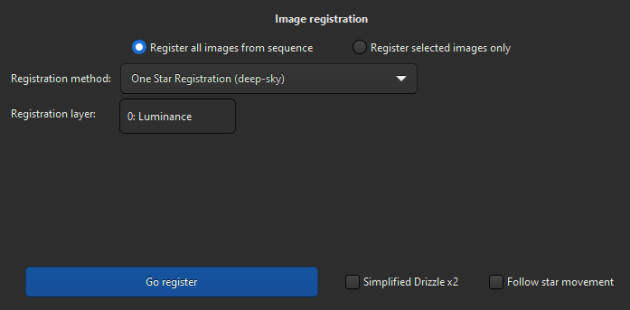One Star Registration (deep-sky)
This is the simplest method to register deep-sky images.
Because only one star is used, images are aligned using the simplest transformation, i.e. 2 shifts on X and Y. No rotation or scaling are performed.
A selection needs to be done in the image to indicate where the star will be searched, so this requires user intervention and cannot be simply automated. The star search throughout the sequence is conducted using the 'PSF for the sequence' function, available from the image contextual menu or from the seqpsf command.
Tip
Shifts at subpixel precision are saved in the sequence file. No new sequence is created. Note however that shifts at pixel precision will be used for stacking.
Screen
- 1⚓

Layer on which the registration is done.⚓
It can only be done on one layer at a time.
Tip
The (*) sign appearing after the layer's name means that registration data is already available for this layer.
Note
When processing images, registration data is taken from the default layer if available (for RGB images: Green, else fallback to Blue then Red).

Use this option to use the position of the star found in the previous image as new center for the current image selection for star detection.
This allows the selection area to be smaller, registration faster, and accounts for drift or images with a large number of stars. Large jumps will still not be manageable if the star falls out of the selected area.
Warning
Enabling this option requires the registration to not be parallelized, it will run on one CPU core only.

Use this option to upscale the images by a factor of 2.The actual upscale will be performed at stacking time for this registration method.
